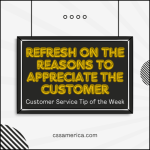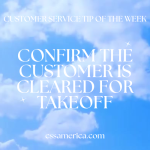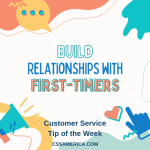 It was 95 degrees outside. That’s not too bad when you’re inside and enjoying the air conditioning; but when Rachel’s A/C went out, in came Rachel’s worry. Luckily, she knew the company to call, and a technician from Acme HVAC (fake name, real company) came out the next morning.
It was 95 degrees outside. That’s not too bad when you’re inside and enjoying the air conditioning; but when Rachel’s A/C went out, in came Rachel’s worry. Luckily, she knew the company to call, and a technician from Acme HVAC (fake name, real company) came out the next morning.
Rachel is not a heating, ventilation, nor air conditioning expert, but she likes to understand the problem before deciding how to get things fixed.
The visit went well, and later that day, Rachel responded to a follow-up e-mail from the home office of Acme HVAC with a positive reply. She was very happy with the technician. The tech was an expert in his work and excellent in his communications with Rachel, and there were 3 lessons learned for all of us when we’re in a situation like this – where you know lots more than the customer:
- Pack Your Patience – Providing short answers to broad customer questions – so you can shorten the conversation – can lead to a customer’s lack of clarity or understanding. The customer doesn’t have your level of knowledge, so if they’re inquisitive, it’s because they want to talk, they want to learn, they want to make an informed decision. Be patient from the start.
- Explain in Bite-sized Chunks – Explaining something new to a customer verbally can be difficult for them to clearly comprehend, especially if you’re discussing a process. Most people cannot absorb and understand a series of steps or interrelated topics if you give them everything at once. Give them Step 1, verify they understand, then go to Step 2.
- Allow/Encourage Questions – Learning is made easier if the teacher is encouraging conversation. Ask if they have any questions. Note how you’re happy to answer any questions. Offer the types of questions that people in similar situations often ask. Convey a willingness to help them learn.
When you know more than the customer, Pack Your Patience, Explain in Bite-sized Chunks, and Allow/encourage questions.
Signup for FREE Tips! Contact Us More Resources for You Visit Our Home Page























